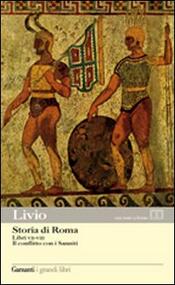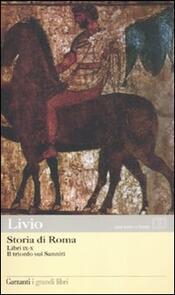

Storia di Roma. Libri I-II
-
Tradotto da: Guido Reverdito
Tutti i formati dell'opera
Acquistalo
Sinossi
A cura di Guido Reverdito
Con un saggio di Emilio Pianezzola
Con testo a fronte
Dei 142 libri che componevano la monumentale storia Ab urbe condita, cui Livio lavorò dal 27 a.C. fino alla morte, solo 35 ci sono pervenuti: la prima deca, dalle origini di Roma fino alla terza guerra sannitica (298-290 a.C.); la terza e quarta deca, e i primi 5 libri della quinta, molto lacunosi, dalla seconda guerra punica alla fine di quella macedonica (218-168 a.C.). Il grande storico ripercorre secondo lo schema annalistico le vicende dell’Urbe dall’arrivo di Enea in Italia ai funerali di Druso, figliastro di Augusto (9 a.C.) con lo scopo di fornire un maestoso, patriottico affresco della grandezza raggiunta in sette secoli dal popolo romano, ormai dominatore del mondo, e tramandarne ai posteri le gloriose imprese. L’intento retorico e morale prevale sul rigore storiografico e sull’accertamento dei fatti tanto caro al metodo “scientifico” di autori come Tucidide e Polibio: in uno stile solenne ma insieme scorrevole e non privo di accenti poetici vengono esaltati i valori civili, etici e religiosi della romanità arcaica offuscati nel tempo dalla crescente sete di potere e di ricchezza e rilanciati dal princeps Augusto, nel quale il “repubblicano” Livio saluta il restauratore della pace interna e della moralità antica.
- ISBN: 8811364191
- Casa Editrice: Garzanti
- Pagine: 480
- Data di uscita: 16-06-2005
Recensioni
Iter Romam feci, vetere cum codice rubro, quo moris est viatores per Vrbem duci. Haudquaquam dico illum Baedecker , immo editionem loebensem primorum librorum duorum Livii Ab urbe condita . Melior dux non optandus.
This was a book I’ve wanted to read since my trip to Italy 2 years ago. The history of Rome is exciting to me. Livy was a Roman Historian who wrote about the beginning of Rome to his time. He is interesting because it’s the only first hand telling of everyday life in Rome. It took me a while to read Leggi tutto
These stories of early Rome are great, and read pretty fast. There are some surprises: Livy says the Greeks let Aeneas go when Troy fell, which is a very different picture from Book 2 of the Aeneid. It's a lot of fun, especially when consuls with names like Spurius Furious appear.
It's the Loeb edition of Livy. Enough said.
The first book of Livy's history traces the history of Rome from its mythical origins to the expulsion of Tarquin. The vivid narrative, devoid of excessive moralizing and written briskly, makes for delightful reading. Interesting enough, in Livy's account Romulus never actually dies, but ascends to
This is a history/educational text, but there are obviously some very popular chapters in here. Tanaquil, Lucretia, Verginia, The Sabine Women...etc, are all very interesting. Some of the more historical chapters can be harder to read. But good for knowing Roman values and timelines.
The Loeb edition of Livy comes in 14 volumes, so I'll give a summary of the complete work in this first volume, so newcomers have an idea of what to expect. The Loeb books are conveniently small, feature the original Latin with an English translation on the opposite page, the maps are o.k., and the
Citazioni
Al momento non ci sono citazioni, inserisci tu la prima!




























